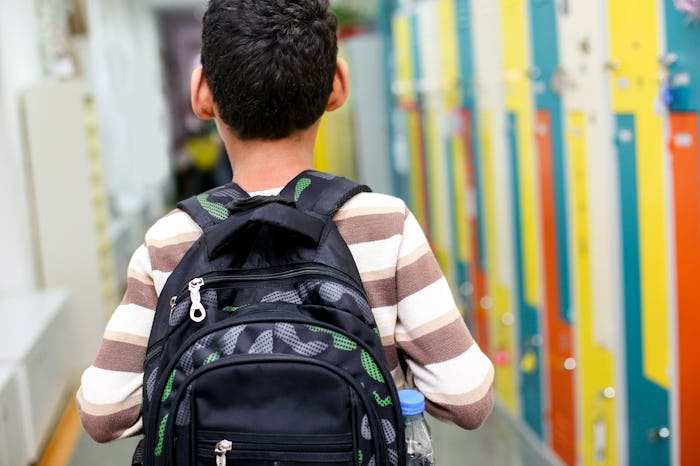News

Doctors Are Urging Schools To Stop Doing "High-Intensity" Active Shooter Drills
In guidance released Monday, the American Academy of Pediatrics (AAP) recommended schools avoid "high-intensity" active shooter drills over concerns they may have unintended negative psychological and emotional effects on children and even staff members. While schools are often focused on preparing their students for a crisis situation, the AAP has cautioned schools need to balance their need for preparedness with a need to protect children from the potential distress and psychological consequences that practicing such drills may cause.
"High-intensity crisis preparedness efforts may contribute to a distorted sense of risk in children and perspective that adults and peers need to be viewed as potential killers," the AAP wrote in a new policy statement entitled Participation of Children and Adolescents in Live Crisis Drills and Exercises. "More broadly, these activities can increase children's anxiety and fear that the world is a threatening place. This atmosphere of a continuous threat of violent death is likely to increase anxiety further among children when frequent threats directed at the school or present in the community lead to lockdown procedures."
As such, the AAP recommends schools avoid having children participate in "high-intensity" drills. But what exactly are "high-intensity" active shooter drills? According to the AAP, these are drills in which school districts use an actor and real weapons with gunfire or blanks to simulate an attacker and theatrical makeup to mimic blood and gunshot wounds on planted victims. In some instances, students, staff, and parents are purposefully led to believe the drill is in fact real, despite the health risks and safety concerns such a tactic may pose.
According to joint report issued in February by gun safety group Everytown, the American Federation of Teachers (AFT), and the National Education Association (NEA), active shooter drills have become a common practice in schools across the United States, often beginning as early as preschool. While roughly 40% of the nation's public schools held lockdown drills related to school shootings during the 2005-2006 school year, that number jumped to 95% by the 2015-2016 school year, the report noted.
But instead of having children participate in such "high-intensity" drills, the AAP recommends children only be involved in crisis exercises if and when their involvement would be of direct benefit to them. "First responders may need to practice being in a high-stress situation involving active shooters, but the same is not true for school-aged children," the AAP said.
While no other developed nation has seen mass shootings occur with the same frequency the United States sees, mass shootings actually comprise only a small fraction of the nation's gun violence. According to The Giffords Law Center to Prevent Gun Violence, mass shootings are estimated to make up less than 1% of all gun deaths in the United States.
Along with limiting children's participation, the AAP also recommended schools obtain parental consent prior to involving any children in an active shooter drill and notify parents, staff, and students before a drill or preparedness exercise is to be carried out. To help make drills more effective, schools should focus on teaching skills and behavior to children and staff rather than simply simulating a distressing and pressure-filled crisis. Schools should then collect feedback from all involved parties, including students, in order to identify any gaps and increase the effectiveness of future drills.
The AAP is not the first organization to caution schools against conducting active-shooter drills. Everytown, AFT, and NEA have all recommended schools stop, or seriously overhaul, active-shooter drills. "Everytown, AFT, and NEA do not recommend these drills for students and believe schools should carefully consider these impacts before conducting live drills that involve students and educators," the organizations said in their February report.
What's more, the AAP, Everytown, AFT, and NEA all agree that more research needs to be done into both the effectiveness of active shooter drills and the potential trauma they can cause in children. Until then, they recommend schools take a calmer, less dramatic approach to preparing students for crisis situations.